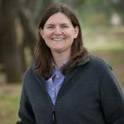
BMC Genomics 2014, 15:1004 (14 pp)
Background: The identification of genetic markers associated with complex traits that are expensive to record such as feed intake or feed efficiency would allow these traits to be included in selection programs. To identify large-effect QTL, we performed a series of genome-wide association studies and functional analyses using 50 K and 770 K SNP genotypes scored in 5,133 animals from 4 independent beef cattle populations (Cycle VII, Angus, Hereford and Simmental × Angus) with phenotypes for average daily gain, dry matter intake, metabolic mid-test body weight and residual feed intake.
Results: A total of 5, 6, 11 and 10 significant QTL (defined as 1-Mb genome windows with Bonferroni-corrected P-value
Conclusions: This GWAS study, which is the largest performed for feed efficiency and its component traits in beef cattle to date, identified several large-effect QTL that cumulatively explained a significant percentage of additive genetic variance within each population. Differences in the QTL identified among the different populations may be due to differences in power to detect QTL, environmental variation, or differences in the genetic architecture of trait variation among breeds. These results enhance our understanding of the biology of growth, feed intake and utilisation in beef cattle.
Available at: http://works.bepress.com/stephanie_hansen/23/

US government work & Creative Commons license.